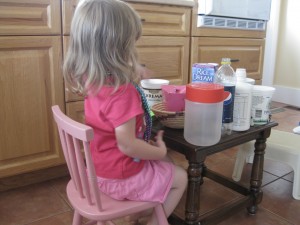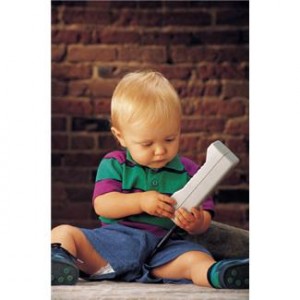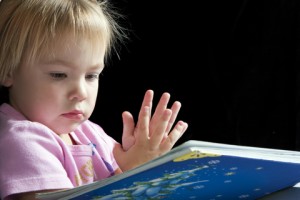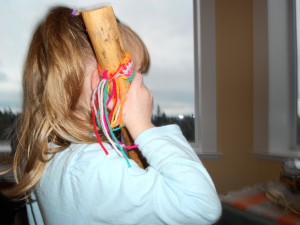Have you ever watched a child turn a common rock into a precious treasure? Or play far more with an empty box than the toy it contained? Somtimes parents and caregivers purchase books, dvd’s, and programs to promote brain development and kindergarten readiness and what do kids do? They use what’s in the recycling bin as learning tools. My kitchen now has a drawer with pastry trays, strawberry baskets, styrofoam cups, egg cartons, plastic bottles, jar lids and more “junk”. All used for learning and playing.
As children play and manipulate these items they are using their imagination. They practice math with counting, sizes and sequencing. There’s language galore as they chatter away and interact with whatever they are creating. Building, balancing, exploring how objects fit together and the noises they make are part of science discovery. Children direct their own actions and practice self-reliance and regulation of their emotions.
Here is part of a young dad’s email to me regarding something he made for his son: When he was around 1 year of age I found rinsed-out pop-bottles filled 1/2 with water +/- a bit of dish-soap or sparkles, then recapped tightly to be great toys. The children can stack them, shake
them, and learn their colors / numbers. For little ones, there’s also learning to focus and track with eyes, to coordinate movements, and developing attention. Paying attention is another thinking and learning skill.
For little ones, there’s also learning to focus and track with eyes, to coordinate movements, and developing attention. Paying attention is another thinking and learning skill.
Making this restaurant (see photo) needed most of a morning to set up and create. I was able to observe as I tidied in the kitchen and, best of all, play a little too. I noticed that children’s ability to use what’s available can be a powerful thinking and learning strategy. What might you have at home or in your care center that kids can turn into different kinds of learning tools?



